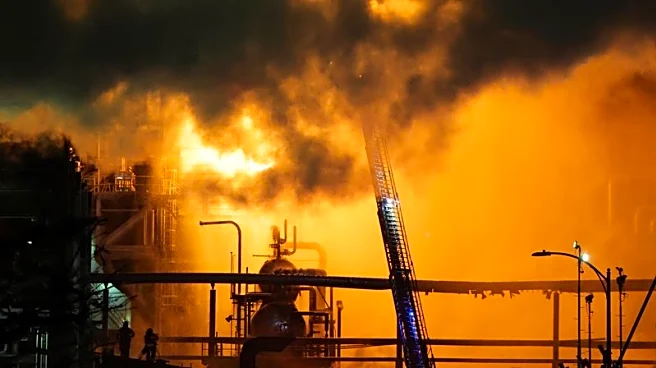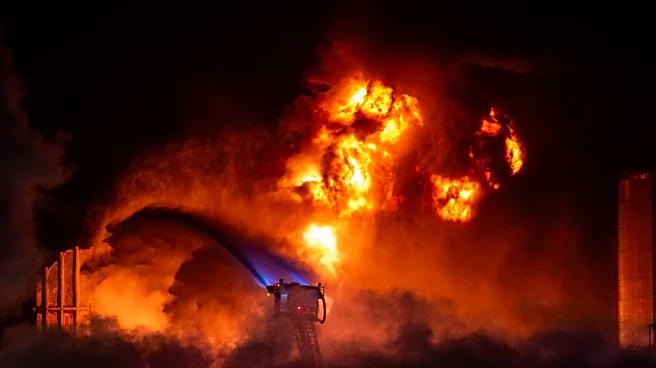What is the story about?
What's Happening?
A significant fire erupted at the Chevron refinery in El Segundo, California, following an explosion on Thursday night. The refinery, which is the second-largest in the state, plays a crucial role in producing motor vehicle and jet fuels for Southern California. The fire damaged a jet fuel production unit, and while the extent of the damage appeared limited by Friday morning, the incident is expected to cause an immediate increase in gas prices in the region. The refinery produces about one-fifth of the motor vehicle fuels and 40% of the jet fuel consumed in Southern California. Economist Severin Borenstein from UC Berkeley noted that such fires typically lead to a spike in wholesale spot prices, which are quickly reflected at the gas pumps. The impact on prices will depend on how long the refinery remains offline, with potential for significant price increases if the disruption is prolonged.
Why It's Important?
The fire at the Chevron refinery is significant due to its potential impact on gas prices in Southern California, a region already facing high fuel costs. The refinery's output is critical to the area's fuel supply, and any disruption can lead to price volatility. This incident highlights the vulnerability of the region's fuel supply chain, which is compounded by limited refinery capacity and ongoing maintenance at other facilities. The potential price increase could affect consumers and businesses, leading to higher transportation costs and impacting economic activities. Additionally, the incident underscores the challenges faced by California in balancing energy needs with environmental policies, as the state aims for a clean-energy future while managing current fuel demands.
What's Next?
The immediate focus will be on assessing the full extent of the damage and determining how long the refinery will be offline. Chevron and local authorities will likely work to restore operations as quickly as possible to mitigate the impact on fuel prices. In the meantime, the region may rely on fuel imports and existing inventories to meet demand, though these measures could take time to implement. Stakeholders, including government officials and industry leaders, will be monitoring the situation closely to address any supply shortages and price spikes. The incident may also prompt discussions on enhancing the resilience of the state's fuel supply infrastructure.
AI Generated Content
Do you find this article useful?
















